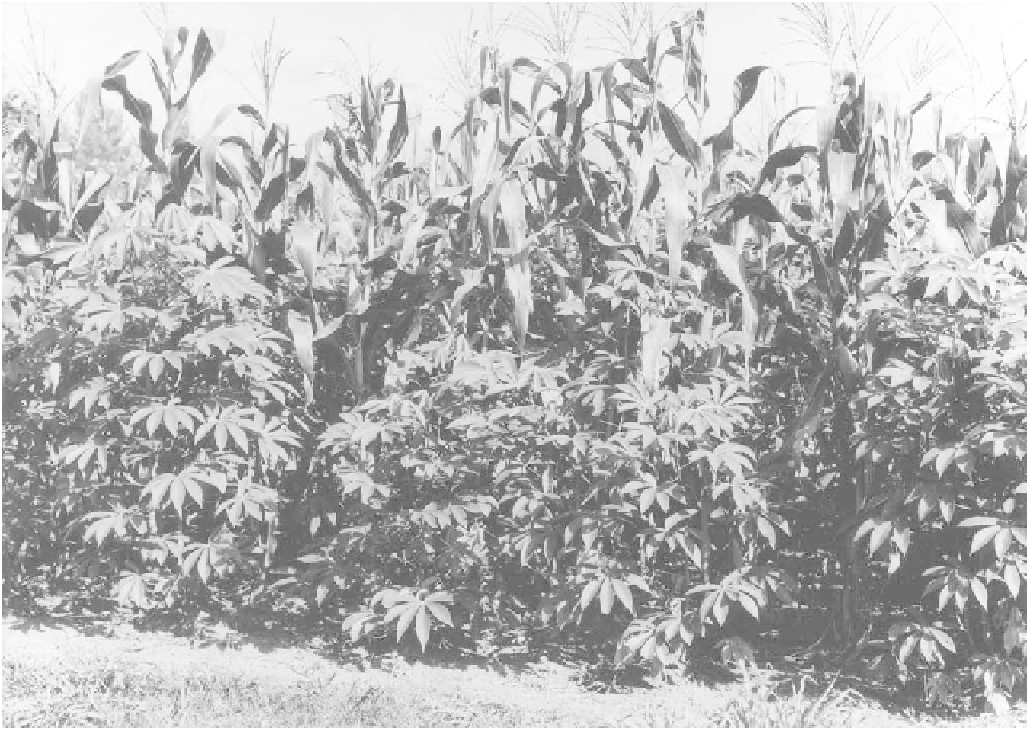Agriculture Reference
In-Depth Information
less dependence on human-derived inputs from outside of
the system and greater stability.
There are many ways that a farmer, beginning with a
recently cultivated field of bare soil, can allow succes-
sional development to proceed beyond the early stages.
One general model, beginning with an annual monoculture
and progressing to a perennial tree crop system, is illus-
trated in Figure 17.3 and described below.
proportion of their biomass to the soil. One
might be a nitrogen-fixing legume. Small live-
stock such as ducks or geese might be allowed
to graze on weeds or feed on snails that might
be common colonizers. All of these early species
would contribute to the initiation of the recovery
process, and they would modify the environment
so that non-crop plants and animals — especially
the macro- and microorganisms necessary for
developing the soil ecosystem — can also begin
to colonize.
1-2.
The farmer begins by planting a single annual
crop that grows rapidly, captures soil nutrients,
gives an early yield, and acts as a pioneer spe-
cies in the developmental process. The farmer
could also choose to introduce other less
aggressive annuals into the initial planting,
mimicking the early successional process.
4.
Following the initial stage of development
(towards the end of the first season or at the
beginning of the second or third season), short-
lived perennial crops might begin to be intro-
duced. Taking advantage of the soil cover created
by the pioneer crops, these species can diversify
the agroecosystem in important ecological
aspects. Deeper root systems, more organic
matter stored in standing biomass, and greater
habitat microclimate diversity all combine to
advance the successional development of the
agroecosystem (Figure 17.1).
3.
As a next step (or instead of the previous one),
the farmer can plant a polyculture of annuals
that represent different components of the pio-
neer stage. The species would differ in their
nutrient needs, attract different insects, have
different rooting depths, and return a different
FIGURE 17.1
The short-lived perennial yuca (Manihot esculenta) growing in an annual corn crop, Turrialba, Costa Rica.
The
yuca is introduced after the corn is established.

Search WWH ::

Custom Search